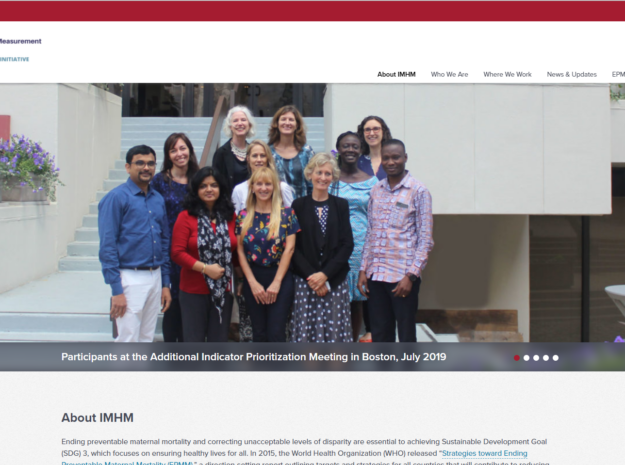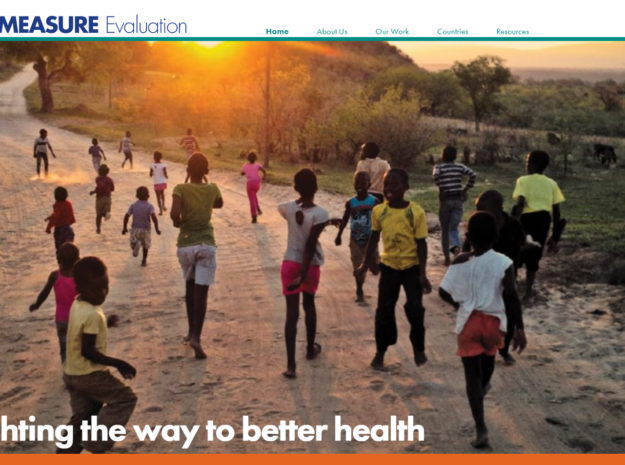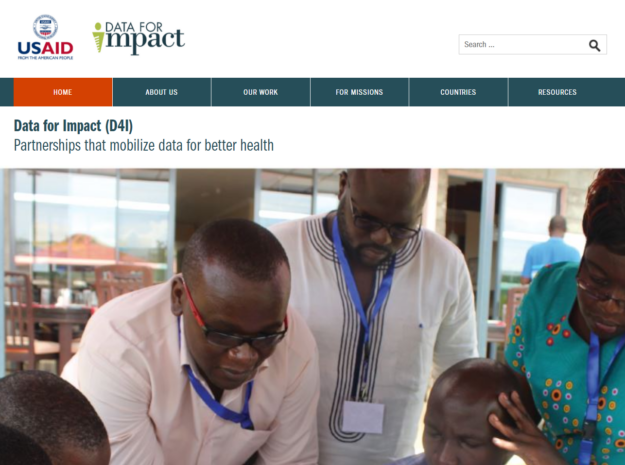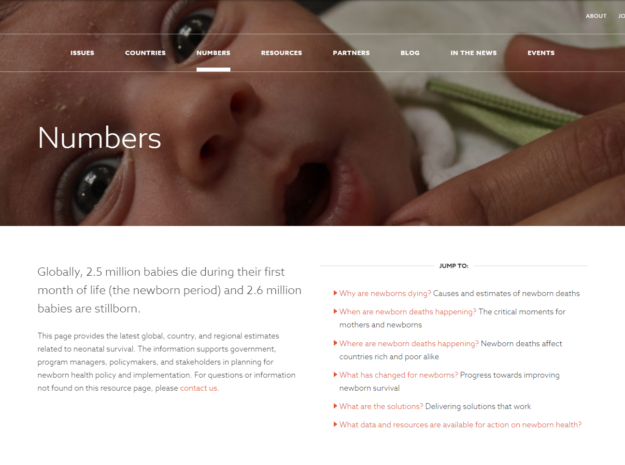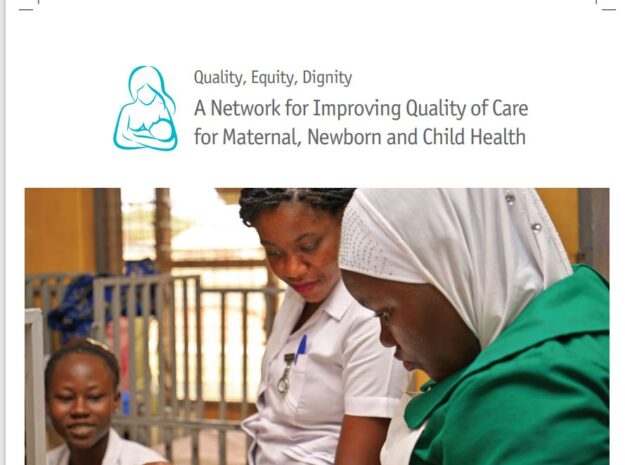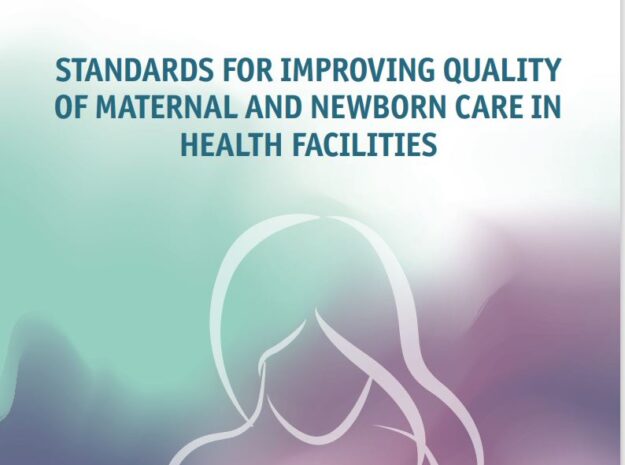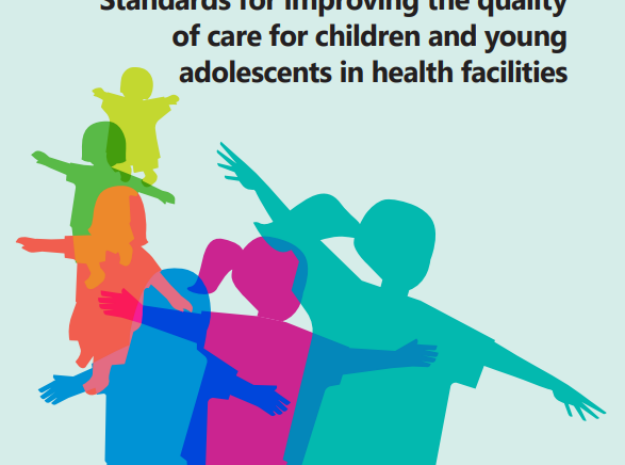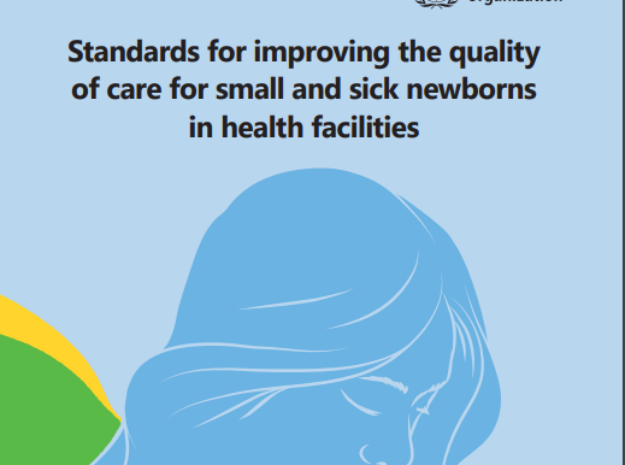This sub-section focuses on global Maternal Newborn Health monitoring frameworks, selected indicators guidance, data sources, and tools.
Visit these websites to access MNH indicators, data and metrics-related resources.
The MNCAH Data Portal is a new unique resource that brings together many different data on key indicators from several sources into one central place. The Data Portal is the first comprehensive compilation of data on demographics, mortality, morbidity, risk factors, coverage and policy on maternal, newborn, child and adolescent health.
The Improving Maternal Health Measurement Capacity and Use (IMHM) project works closely with countries to further develop, test and validate a subset of the indicators in the monitoring framework. The project provides technical assistance and resources to encourage indicator adoption and routine use. By doing so, they aim to improve measurement capacity for maternal health through a) the development and validation of indicators to inform global standards, and b) support to countries for the adoption and use of the indicators.
Closed in 2020, legacy website available.
Data for Impact (D4I), funded by the United States Agency for International Development (USAID), is an associate award of MEASURE Evaluation and continues its long legacy of building evidence to improve health systems and programs. D4I supports countries to generate and use high-quality data to improve their programs, policies, and—ultimately—health outcomes. We also strengthen the technical and organizational capacity of local partners to collect, analyze, and use data to support their move to self-reliance.
HNN provides the latest global, country, and regional estimates related to neonatal survival. The information supports government, program managers, policymakers, and stakeholders in planning for newborn health policy and implementation. The site features downloadable data and data visualization tools.
Featured Topics
WHO Maternal Newborn Child Adolescent Health (MNCAH) Data Portal
Improving Maternal Measurement Capacity and Use (IHMH) Project
USAID Measure Evaluation Program
USAID Data 4 Impact (D4I) Program
Healthy Newborn Network
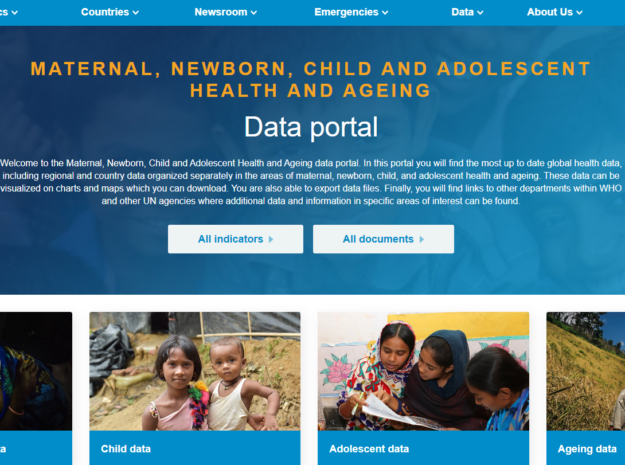
The MNCAH Data Portal is a new unique resource that brings together many different data on key indicators from several sources into one central place. The Data Portal is the first comprehensive compilation of data on demographics, mortality, morbidity, risk factors, coverage and policy on maternal, newborn, child and adolescent health.
Selected Maternal and Newborn Health Global Monitoring Frameworks & Indicators Guidance
A common monitoring framework for ending preventable maternal mortality was developed in two phases based on a series of multi stakeholder consultations.
- Phase I focused on indicators related to the proximal causes of maternal mortality and includes 12 recommended indicators and four priority areas for further indicator development and testing. Learn more.
- Phase II focused on indicators of the social, political, and economic determinants of maternal health and mortality and recommended 25 indicators. Learn more.
- The Improving Maternal Measurement Capacity and Use (IHMH) project is promoting adoption and use of the EPMM indicators by country decision makers and is further developing, testing and validating indicators focused on maternal health and survival. Learn more.
The Every Newborn Action Plan, published in 2014, recommends a set of ‘core’ and ‘additional’ indicators categorized under impact indicators (Newborn mortality rate, stillbirth rate), coverage for every mother and baby (skilled attendant at birth, exclusive breastfeeding at 6 mos, early PNC), coverage for complications (antenatal corticosteroid use, kangaroo mother care and feeding support, treatment of neonatal sepsis), and inputs (birth registration.)
This WHO resource recommends a core set of indicators for Reproductive, Maternal, Newborn, Child and Adolescent Health (RMNCAH) for collection, aggregation and reporting in routine health management information systems (HMIS). It includes possible analyses and visualizations of the indicators, references on how to assess the quality of the data, and considerations for using the data for decision-making. The document is a working draft published by WHO in 2019.
This report presents the indicator and monitoring framework for the Global Strategy for Women’s, Children’s and Adolescents’ Health, (2016-2030) focusing on its Survive, Thrive and Transform objectives and 17 targets. The report details the selection process for the indicators and implications for monitoring, measurement, investments and reporting.
This framework outlines QoC information needs of key actors across system levels and includes recommended MNH quality of care indicators in appendix 1 and 2 (see also below).
MNH Data Sources and Tools
Health Management Information Systems
For recommended RMNCH indicators for monitoring in routine health information management systems, check out the WHO Facility Analysis Guidance for RMNCH Managers.
Published by the USAID-funded Maternal and Child Survival Program (MCSP) in 2018, the What Data on Maternal and Newborn Health do National Health Management Information Systems Include? reviews the data elements related to maternal and newborn health (MNH) present in the health management and information (HMIS) systems in 24 low- and lower middle-income countries. The review’s purpose is to quantify the extent to which key data elements are available in the antenatal, delivery and postpartum registers and associated summary reporting of the 24 USAID priority countries for MNH.
Health Facility Assessment Tools
The SPA Survey is a health facility assessment that provides a comprehensive overview of a country’s health service delivery. SPA surveys collect information on the overall availability of different facility-based health services in a country and their readiness to provide those services. The SPA questionnaires were last updated in 2012. The SPA indicators and questionnaires are currently being revised to incorporate a greater focus on quality of care and are expected to be available by the end of 2021.
The harmonized health facility assessment (HHFA) represents a resource package for conducting standardized health facility surveys. The HHFA enables a comprehensive, external review of the availability of health facility services, the systems that facilities have in place to deliver services at required standards of quality, and the effectiveness of the services. The HHFA builds upon the USAID/WHO Service Availability and Readiness Assessment (SARA) and incorporates components of other key global health facility surveys and indicator lists. It is based on global service standards and uses standardized indicators, questionnaires and data collection methodologies. Standardization of indicators and data collection promotes alignment of health facility survey approaches and enables comparability of results over time and across geographic areas.
Household Surveys
Demographic and Health Surveys (DHS) are nationally-representative household surveys that provide data for a wide range of monitoring and impact evaluation indicators in the areas of population, health, and nutrition.
The DHS Phase 8 (revised in 2020) includes a Women’s Questionnaire that collects information on antenatal and postnatal care, place of delivery, who attended the delivery, birth weight, and the nature of complications during pregnancy for recent births.
The Multiple Indicator Cluster Surveys (MICS) program is a UNICEF‐supported household survey program whose key objective is to monitor the situation of children and women.
Qualitative Data
Measure Evaluation
The MEASURE Evaluation legacy website includes a compendium of tools including qualitative tools, such as maternal case review tools.
Quality of Care (QoC) Metrics
In 2015, WHO published a vision for MNH that includes eight quality domains related to provision of care, experience of care and cross-cutting health system functions. In 2016, 2018 and 2020 respectively, WHO published standards for improving quality of maternal newborn care (2016), quality of pediatric and adolescent care (2018) and quality of small and sick newborn care (2020) in health care facilities (see below). Each aspirational standard includes several ‘quality statements’ intended to drive actionable improvement to help achieve the standard. In 2017, WHO and partners launched a multi-country Network to improve quality of maternal newborn and child health care, leveraging the MNCH QoC standards, and published a monitoring framework that outlines QoC information needs of improvement leaders at national, subnational and health facility level, and recommends priority quality of care indicators for each quality statement for use by front-line QI teams working to improve care.
Due to the importance of quality care for achieving positive health outcomes, there is widespread interest in measuring quality of care, including for the purpose of improving care in the context of quality improvement efforts.
The Network for Improving Quality of Facility-based Maternal, Newborn and Child Care – this multi-country Network was launched by WHO and partners in 2017. The Network website includes many useful resource, including a Monitoring Framework.
- Includes priority QoC indicators for use by national/subnational managers and facility managers and health workers
- The Monitoring framework includes an appendix of recommended common MNH quality of care indicators (Appendix 1) and a ‘catalogue’ of flexible MNH QoC indicators categorized by Quality Statement for use by QI teams working to improve care in specific technical area
- WHO-led global consultations are in progress (as of March 2021) to prioritize Pediatric & Adolescent and Small & Sick Newborn indicators for incorporation into the QoC Monitoring framework
In 2016, the WHO published Standards for Improving Quality of Maternal and Newborn Care in Health Facilities, following the 2015 publication of the WHO Vision for Maternal and Newborn Health.
In 2018, the WHO published Standards for Improving Quality of Care for Children and Adolescents in Health Facilities, following the 2015 publication of the WHO Vision for Maternal and Newborn Health.
In 2020, the WHO published Standards for Improving Quality of Care for Small and Sick Newborns in Health Facilities, following the 2015 publication of the WHO Vision for Maternal and Newborn Health.
Featured Topics
Multi-Country QoC MNCH Network
QoC MNCH Network Monitoring Framework
Standards for improving quality of maternal and newborn care in health facilities
Standards for improving quality of care for children and adolescents in health facilities
Standards for improving quality of care for small and sick newborns in health facilities
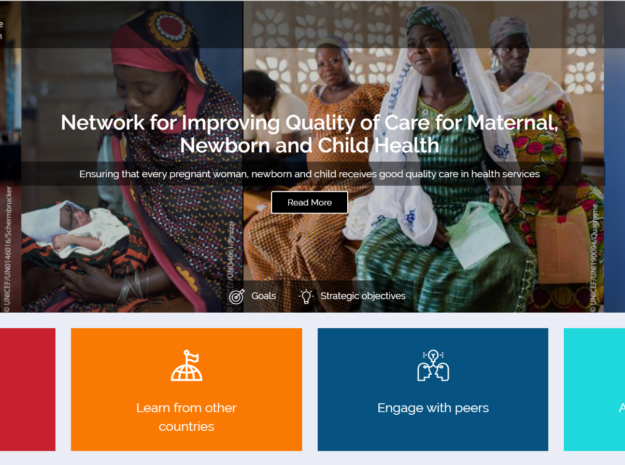
The Network for Improving Quality of Facility-based Maternal, Newborn and Child Care – this multi-country Network was launched by WHO and partners in 2017. The Network website includes many useful resource, including a Monitoring Framework.


